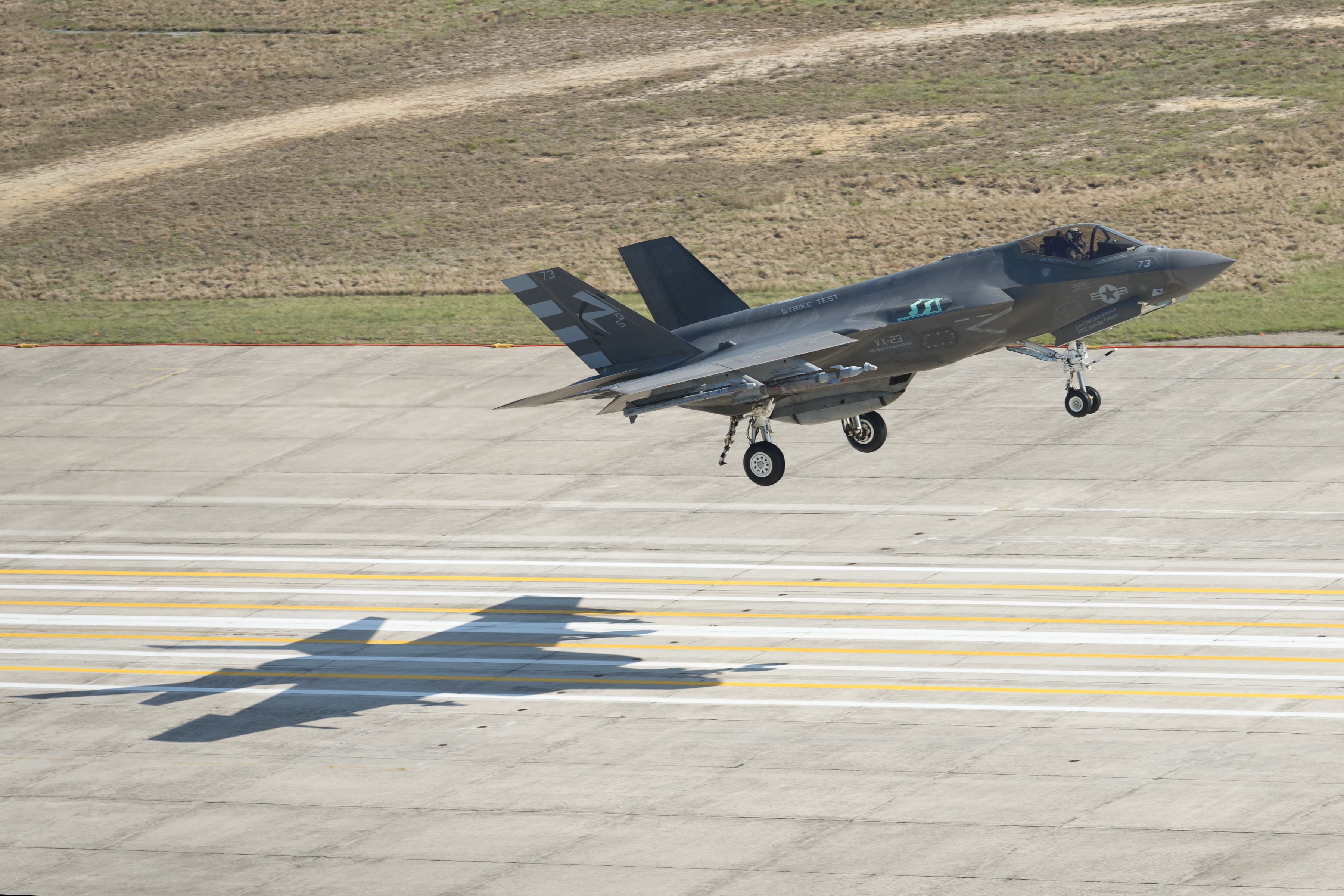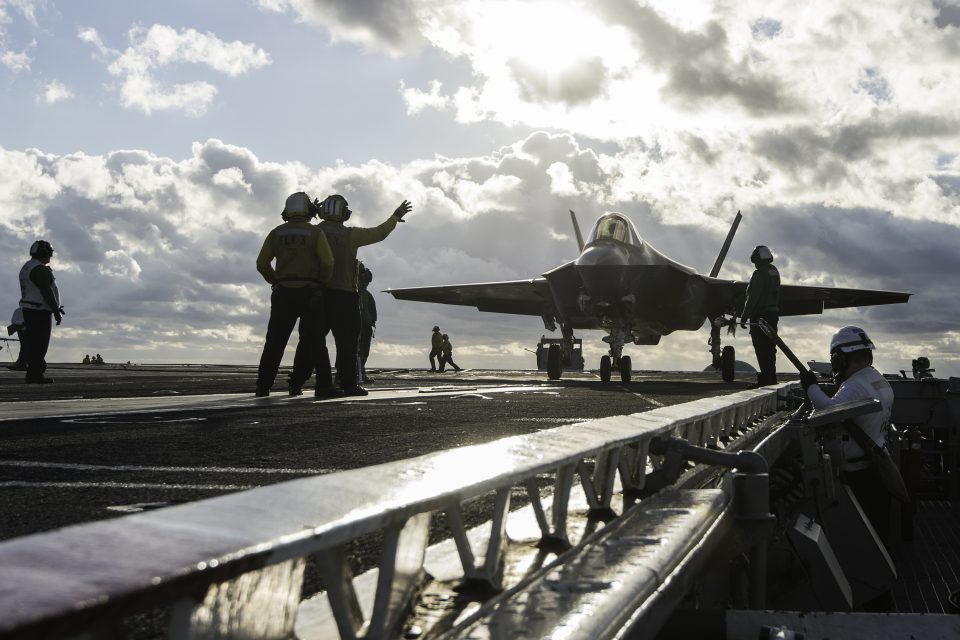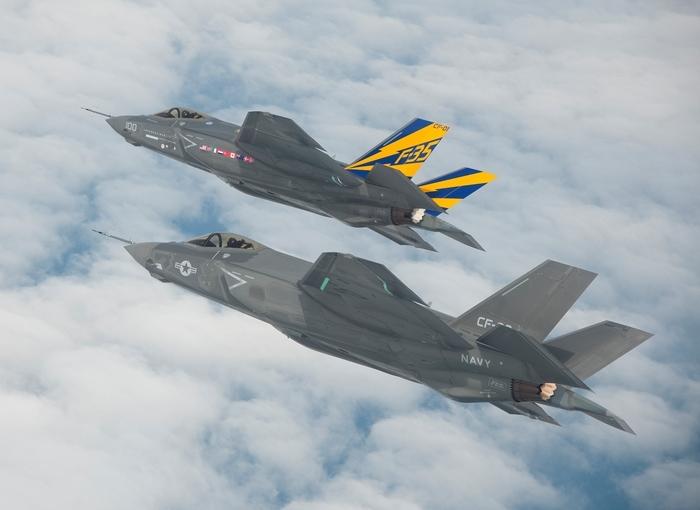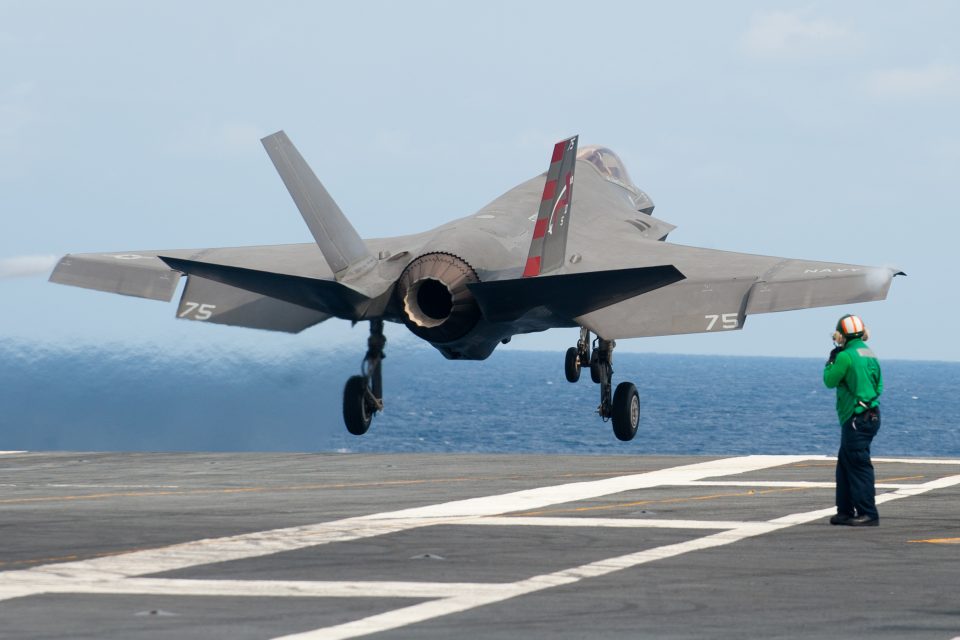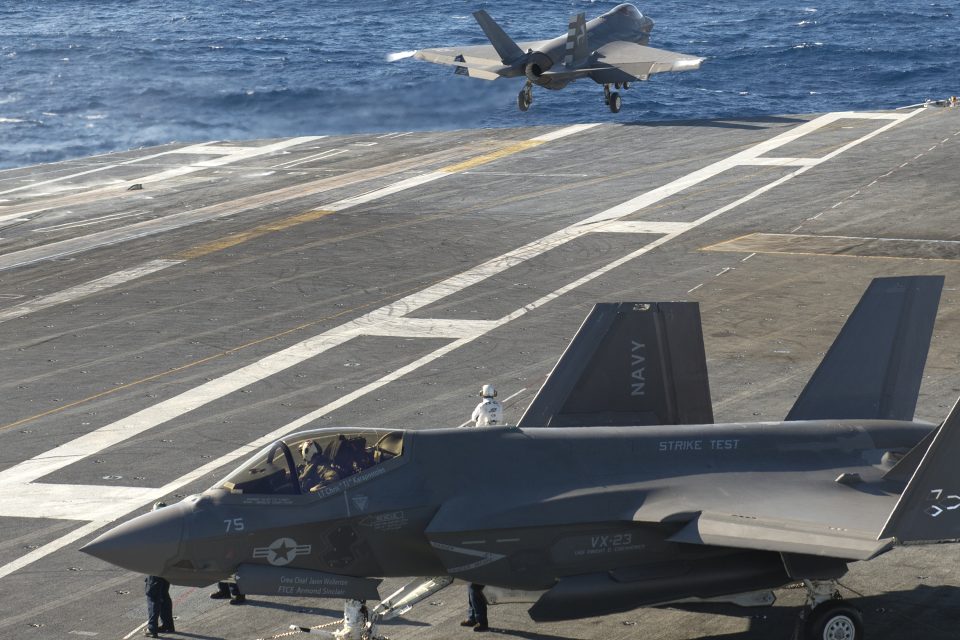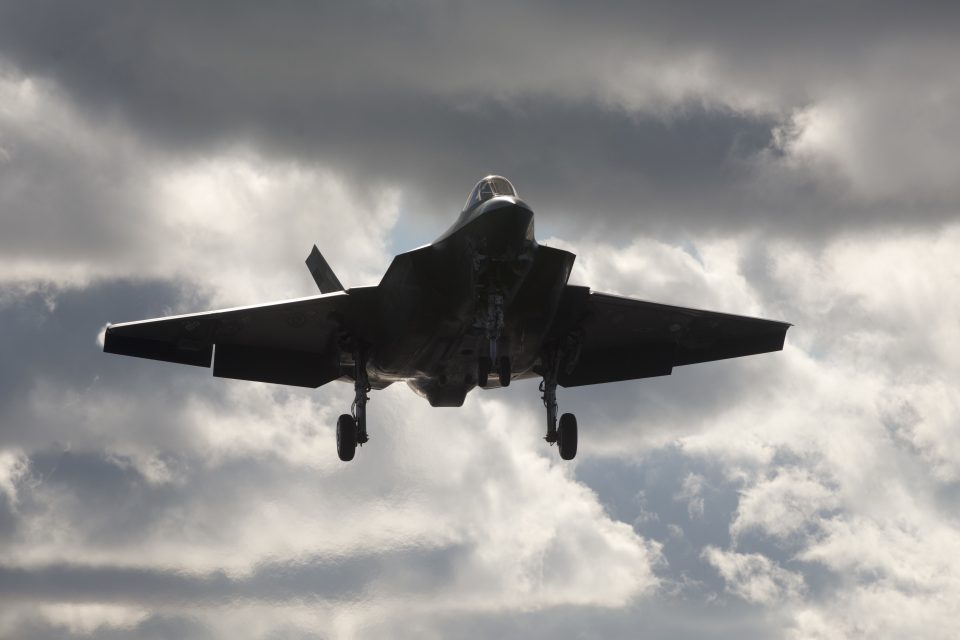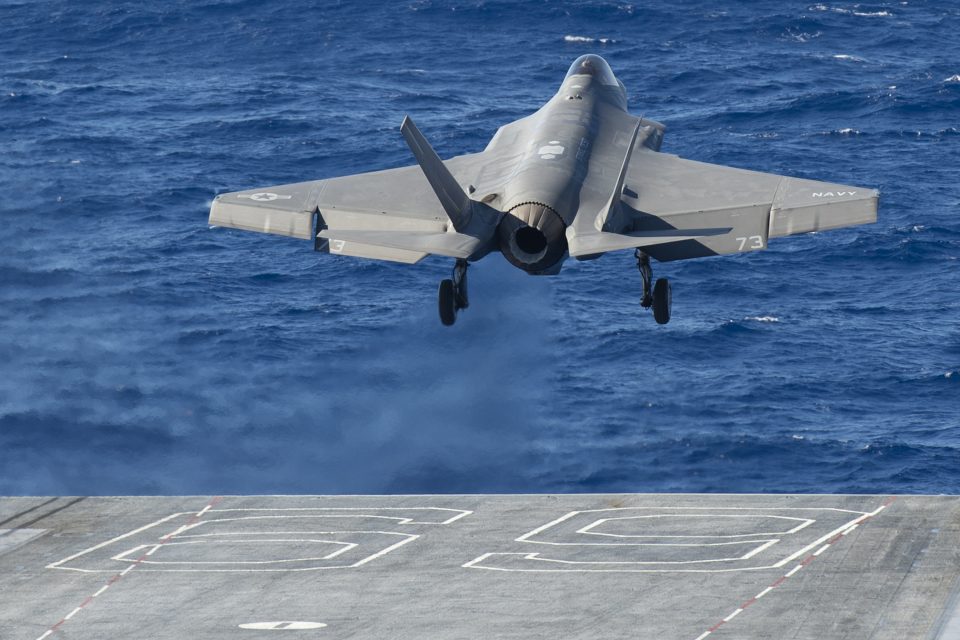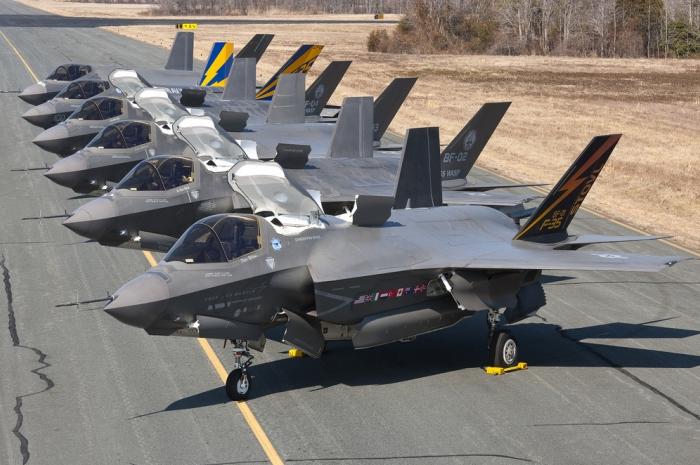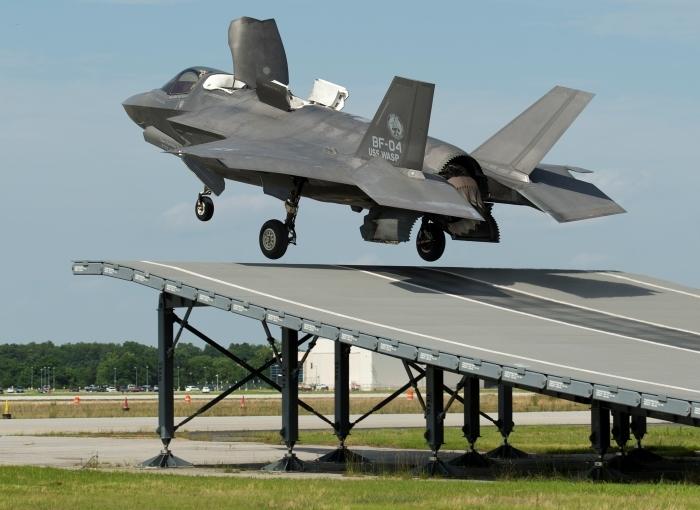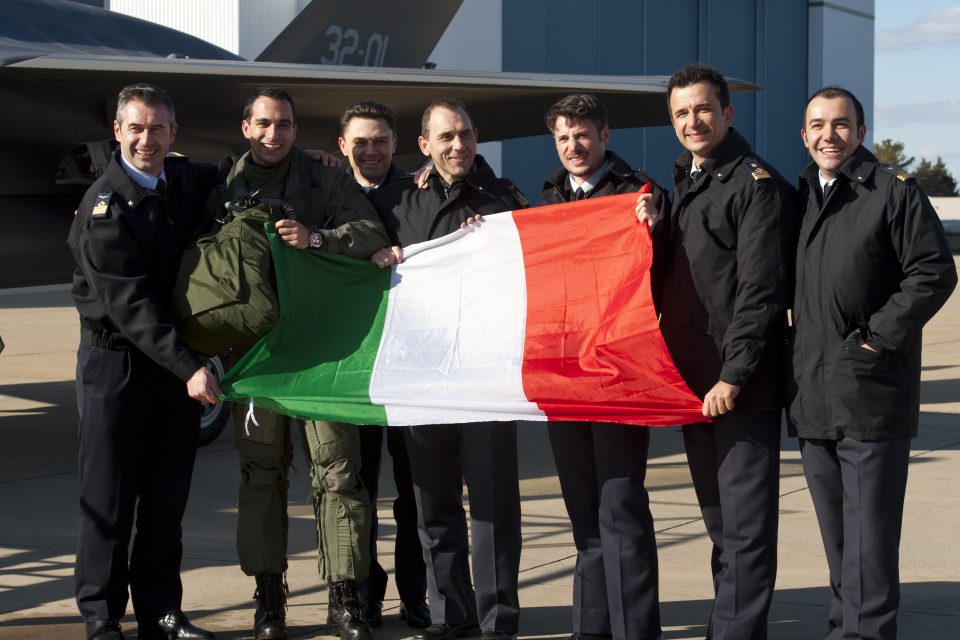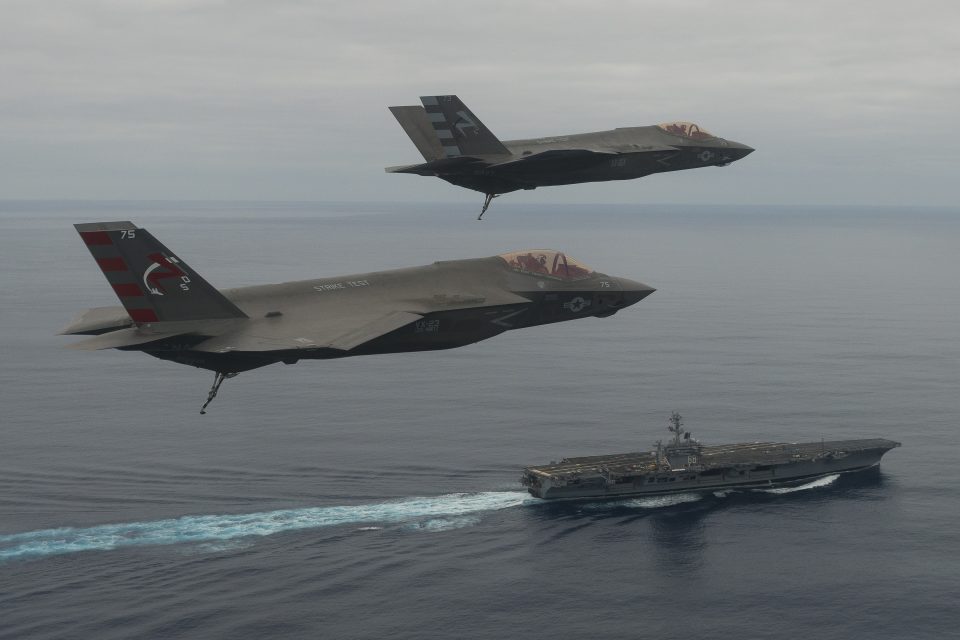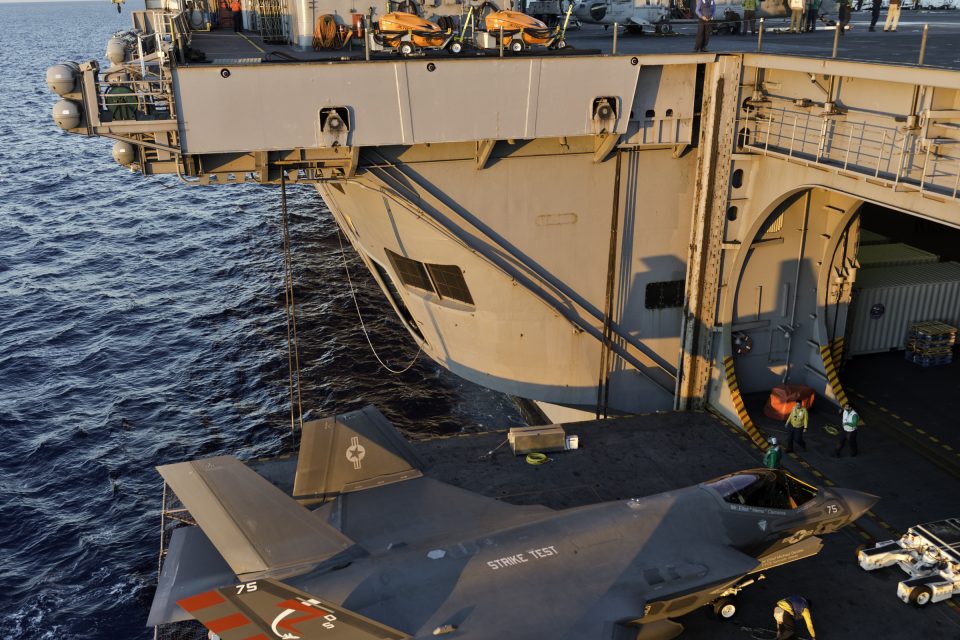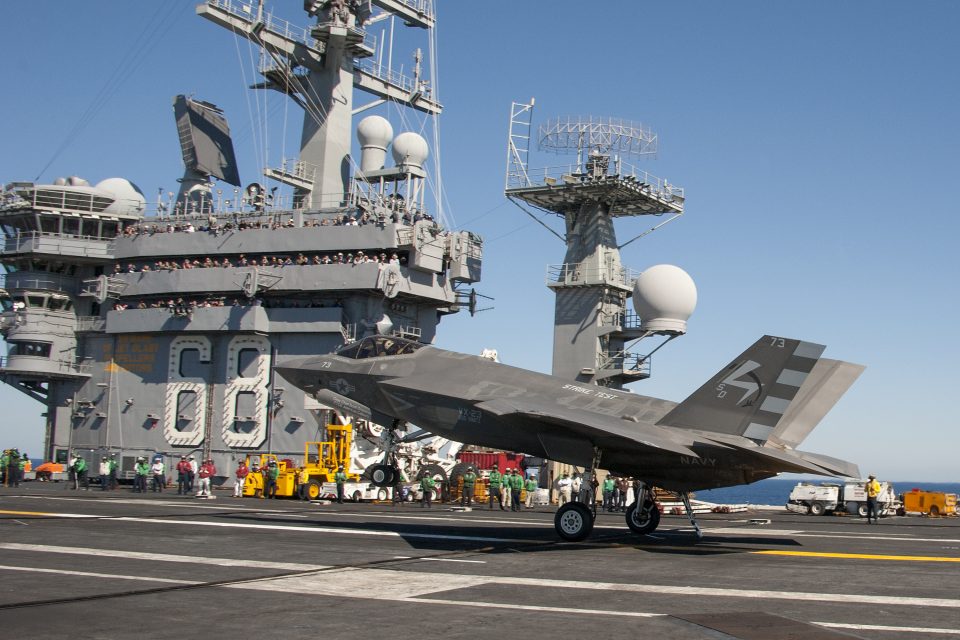2016-05-20 By Todd Miller
Relentless criticism and real-time reporting of any negative development often overshadows the steady progress of the F-35 program and the unprecedented capability of the F-35 platform itself.
Many critics simply “don’t know what they don’t know” and attempt to cast the aircraft within the context of air combat (air-to-air and air-to-ground) as it has been, rather than as it is evolving.
F-35 Lightning II utilizes state of the art sensors fused into a war fighting and communication platform that — by itself — is extraordinary.
Placed within the 21st Century battlefield, the F-35 will effectively increase the capability of every other weapon system it interacts with.
The Lightning II’s air system (airframe, propulsion, sensors, and systems) is software-driven and the estimated eight million lines of code must be meticulously tested and validated prior to being deployed in service. A software glitch can have far greater impact in the context of the F-35 than your desktop or smartphone!
In effect, the “operating system” (various “Blocks” as they are referred too) stability is being greatly improved by fixes, and new capabilities are being added much the same as we have come to experience with our personal phones and computers — but at a much higher level of system complexity.
The United States Marine Corps (USMC) declared the F-35Bs “Initial Operational Capability” (IOC) in July 2015 utilizing the software build “Block 2B.” The IOC has provided the opportunity to vet the aircraft, train personnel, and realize greater capability even while addressing operational challenges.
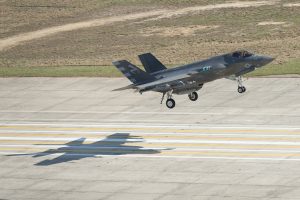
The United States Air Force (USAF) plans IOC in mid-2016 with software build “Block 3i” and the United States Navy (USN) plans IOC with “Block F” on their F-35Cs in late 2018.
However, as it is with today’s frontline aircraft, the F-35 will have software updates bringing new capabilities throughout its projected service life but the F-35 is built from the ground up to be software upgradeable.
A recent visit with members of the Integrated Test Force (ITF) at NAS Patuxent River provided insights into the characteristics, status and testing methodologies of the F-35B & C.
The ITF includes USN, USMC, United Kingdom (U.K.) Royal Air Force and Royal Navy, and industry teammates.
We were privileged to discuss the aircraft and program with Commander Greg Smith, U.K. Technical Lead, Engineer Gordon Stewart of the U.K. Ministry of Defense (MOD), and Andrew Maack, Site Director and Pax River ITF Chief Test Engineer (Andrew was recognized in 2013 with the Test & Evaluation (T&E) Lead Tester Award by the Department of the Navy).
The U.K. plans to buy 138 F-35Bs and, as such, the discussion referenced capabilities within the context of the short take off vertical landing (STOVL) variant. Commander Smith noted that the F-35B utilizes the latest advances in computing power to reduce the complexity required to fly the aircraft. The F-35B replaces the Harrier in service with the USMC and retired some years back by the U.K.
While the Harrier required a “veritable dance” by the pilot to manage throttle, nozzle, and flight controls to keep the aircraft in the air, the F-35B does all the “clever stuff” so the pilot can focus on the mission. British pilots with their uniquely British sense of expression have noted that the F-35B is “rather unremarkable to fly” — American translation “very stable, no surprises, very comfortable.” The exceptional flight characteristics enable the pilot to keep his mental capacity focused on the mission, after all the mission is the only reason the aircraft exists.
The “intelligence” of the F-35 includes automated assistance for landing approach (Delta Flight Path) which when combined with the adverse weather precision approach and landing capability landing (JPALS) system the U.S. Navy is developing will significantly increase the safety of carrier flight operations, free up pilots mental capacity to focus on mission, and reduce the hours spent in Field Carrier Landing Practice (FCLP) prior to deployment.
Beyond increasing mission effectiveness, the aircraft themselves will benefit from fewer hours and fewer hard landings – which translate into reduced cost of maintenance and operations.
Maack emphasized the design concept:
“The whole idea is about eliminating the need for the intense training level by the pilot to manage the airplane. So the idea is to make the aircraft seamless with the pilot.
The aircraft keeps the pilot from getting in a bad situation, the aircraft that manages to get in a bad situation has the ability to recover itself back into the manageable envelope. Some previous aircraft had great capability for those pilots who really knew how to manipulate them, but the consequences for getting it wrong could be very serious.
The F-35 pilot is free to ask what he wishes of the airplane and learn what the aircraft can do. Whether in STOVL mode, or in high angle of attack, it is all about significantly enhanced handling qualities.”
Stewart noted the advanced intelligence featured by the F-35B when performing the ski jump take off, unique to the U.K. and Italy.
“The aircraft knows its weight and center of gravity, it understands all that already, sets the control surfaces — the pilot essentially points it and launches.
When the pilot starts his or her run, they haven’t even told the aircraft to that point that they are doing a ski jump launch.
When the F-35B senses the ramp, it understands it is on a ski jump and needs to apply the appropriate control surfaces — and executes.
A lot of process is automated, the aircraft has a lot of understanding of its current situation and the aircraft uses that to make the task very easy.”
It brings to mind “Skynet” of the Terminator movie series and the moment Skynet becomes “self-aware.” Fortunately, in this case the F-35 is self-aware while remaining safely under control of human mind and hands!
While the high level of “self-awareness” is a factor when launching and landing, it is also demonstrated an unprecedented capability to focus on mission. The very low observable (VLO) characteristics ensure the F-35 is shielded from easy discovery by hostile forces (shrinking hostile surface-to-air engagement zones), the sensors themselves are analyzing every emission — emitters, SAM sites, aircraft, missile launches, ground vehicles — and immediately locate and identify them equipping the pilot with a real-time picture of everything in the battlespace.
Watch your smartphone’s available Wi-Fi spots as you travel about? It’s a little like that, but much more serious business with the F-35 providing much more specific and critical information.
The F-35’s enhanced situational awareness provided by the sensor fusion ensures a superior OODA loop (Observe, Orient, Decide and Act) empowering First Look, First Shot, First Kill by the pilot.
Designed to operate in the contested environment, making the right decision faster than the adversary delivers a decisive tactical advantage.
The same principles apply to air-to-air combat, with the simple objective to kill the hostile aircraft before it knows you are there — rather than in a “knife fight.”
The superior sensors and sensor fusion enable an aircraft that is as much “multi-task” as “multi-role,” performing Intelligence, Surveillance & Reconnaissance (ISR), air-to-air (A2A) and air-to-ground (A2G) activities all on the same mission without need to reconfigure.
What the non-classified audience can’t know, but have some indication of, is the non-kinetic capabilities of the F-35.
To what extent can the F-35’s active electronically scanned array radar (AESA) beam jamming signals, high energy chip frying signals or even a virus to infiltrate the unprotected emitters of a hostile force?
Such a scenario makes Will Smith and Jeff Goldblum’s virus transferring effort in the Hollywood hit “Independence Day” obsolete. We can only speculate about the extent of those and other unknown capabilities.
However, it is clear that the F-35’s sensor suite delivers unprecedented capabilities for electronic and cyber warfare in a fighter aircraft.
https://www.sldinfo.com/shaping-a-21st-century-approach-to-tron-warfare-2/
The exceptional capabilities of the F-35 are particularly relevant as the USAF, USN and USMC prepare for future warfare in a contested or non-permissive environment. Unlike environments such as Iraq and Afghanistan where the U.S. has enjoyed relatively unchallenged air superiority, the military must prepare for future environments that will involve operating against advanced air defense networks.
Beyond attacking and defeating hostile forces in such an environment, the USN sees the F-35C as an Intelligence, Surveillance, Target Acquisition and Reconnaissance (ISTAR) platform that will relay data back to the E-2D Hawkeye, F/A-18E/F and shipborne weapon systems for launch of stand-off strike weapons.
The testing required to ensure integration and validation of flight characteristics is primarily the task of the ITF team at NAS Pax River, while a similar team at Edwards AFB focuses on validation of the mission systems.
Maack indicates that the team at Pax River includes around 700 people and communicates seamlessly with the team at Edwards AFB. The team includes about 230 government and military members, with the balance from Industry (Lockheed Martin, Northrop Grumman, BAE Systems, Pratt & Whitney, and Rolls Royce).
Beyond the Government-Industry participation is that of the International partners. As both Maack and Smith expressed, these partners are not “additional” team members on a separate team, but they are essential team members, fully integrated with the U.S. team, and fill required test and evaluation roles. The only difference is that they have an additional role of reporting back to their home country.
Aside from developing a sophisticated Joint Strike Fighter (USAF, USN, USMC) with a level of commonality, the F-35 is a coalition aircraft, with a global supply chain, maintenance infrastructure, and operational synergies including Tactics, Techniques and Procedures (TTPs).
Production lines exist in the U.S., Italy and Japan; training takes place at Luke AFB, Ariz. and MCAS Beaufort, S.C.; developmental testing take place at Edwards AFB and NAS Pax River; and international partners add their own locations for basing and training once initial stand up is complete.
Integration and communication is unprecedented in the development of this complex weapons system, and while components may be classified on one level or another, the group functions as a single team.
Given the broader integration among coalition partners the F-35 effectively melds all international partners together as an unprecedented coalition air force that will function as a powerful global deterrent.
Looking forward, Smith is confident that the F35B and C programs will meet targets for IOC with Block 3F software. The group is working toward shipborne trials late in 2016 on both the F-35B and C that will include external stores, asymmetric store configurations, evaluation of maximum bring back, and optimization of predictions to ensure maximum aircraft performance.
The U.K. is currently training with their own F-35Bs embedded with the USMC at MCAS Beaufort, S.C. They plan to complete training and simply “lift and shift” the trained squadron to the U.K. and declare IOC in December 2018. About the same time, the first of two new carriers, the “HMS Queen Elizabeth” should be ready for their development testing (HMS Prince of Wales to follow).
The significance of the ITF’s achievements is not lost on Smith or Stewart. As Smith notes, it is ultimately gratifying to be on such a team, and to be treated with full responsibilities and respect as a critical team member.
Stewart referenced the process of “test – compare to models – adjust – retest” that brought him great satisfaction. Ski jump launches started in June 2015 and ran through October 2015. Launch data was evaluated against the computer models, and subtle changes were recommended to the control laws.
Changes were made to the software, applied to the aircraft, and ski jump launches were restarted April 2016. In Stewart’s words, “[t]he opportunity and responsibility to test and influence cutting edge technology — indeed, the most advanced aircraft of our generation —is tremendously rewarding.
In years to come, the aircraft will be active in the fleet, and knowing the part we played, that we captured and fixed things before the aircraft went to service is very rewarding.”
Given the committed professionals working the program on all aspects, there is little doubt the F-35 variants and their capabilities will play a critical role, if not a starring role in 21st century integrated defense systems.
If the critics were as self-aware as the F-35, reporting would be significantly more balanced.
Todd Miller would like to thank Sylvia Pierson, F-35 Lightning II Naval Variants Public Affairs Officer (PAO) and F-35 ITF members interviewed for the article, namely, Commander Greg Smith, Engineer Gordon Stewart and Site Director and Pax River ITF Chief Test Engineer Andrew Maack.
Editor’s Note: Todd Miller is an avid photographer and contributor to a number of Aviation media groups.
Utilizing www.flyfastandlow.com as a personal “runway” it is Todd’s goal to reflect the rapidly evolving capability of the military aviation mission, as well as the character and commitment of the military aviation professional.
For his earlier visit to Pax River to report on the progress of the Triton, see the following:
https://www.sldinfo.com/us-navy-mq-4c-triton-makes-persistent-progress-towards-deployment/
Editor’s Additional Note:
The F-35 and 21st Century Defence: Shaping a Way Ahead
We have just published a book on Amazon in Kindle format focusing the arrival of the F-35 and its interactive role reshaping the defense forces of the democracies.
The slideshows are photos of F-35s from Pax River involved in testing and are credited to the F-35 ITF and includes the arrival of the first F-35 to cross the Atlantic as well, an F-35 built in Italy and flown to the United States by the Italian Air Force.


